AUDI’S CHARGE TOWARDS DESERT DOMINATION
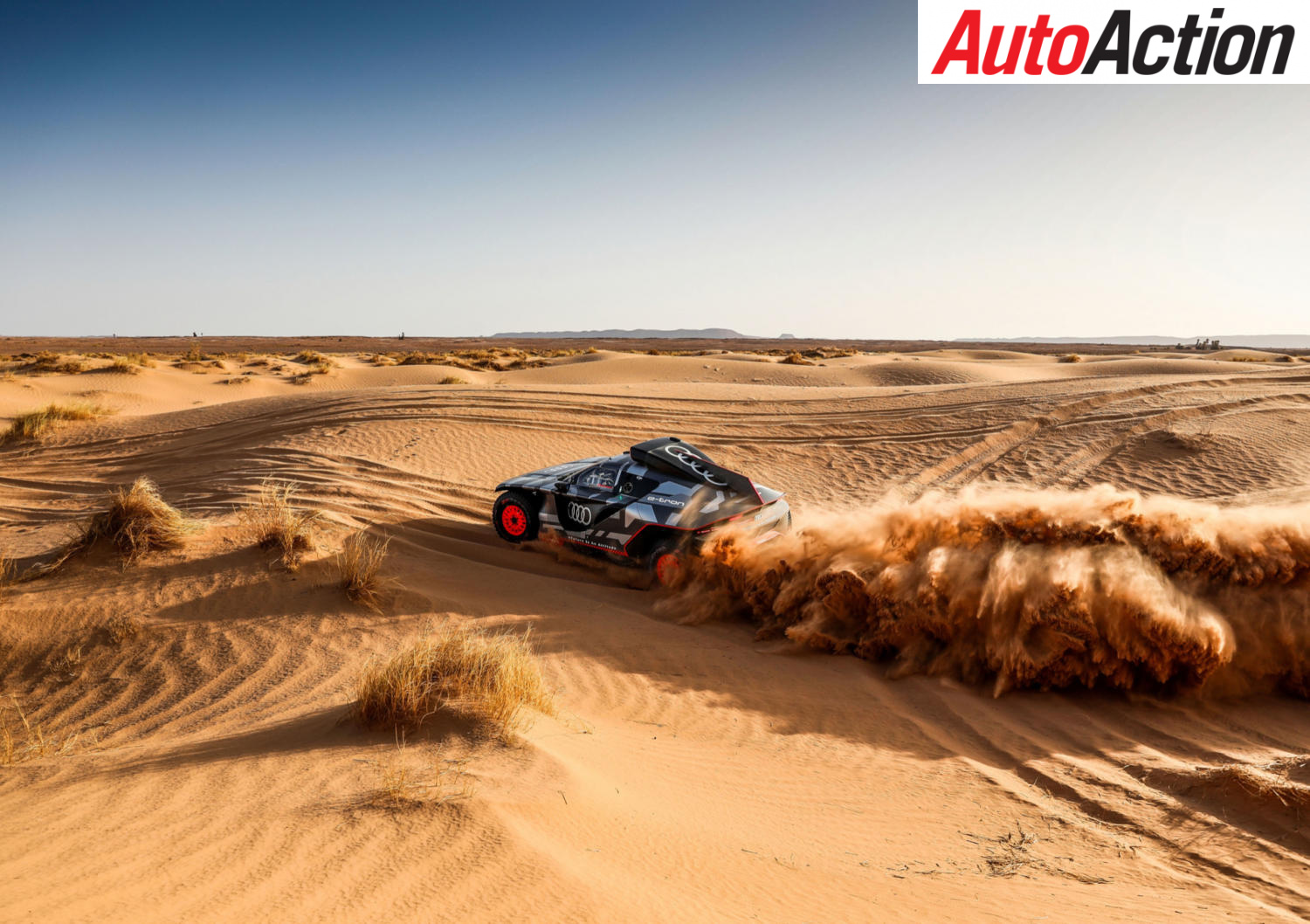
Audi is leaving nothing to chance, especially safety, as it prepares for its first start in the Dakar Rally in Saudi Arabia.
As its RS Q e-tron rally cars are assembled at Audi’s competition headquarters in Germany, the desert duellers are packed with technology already proven in the company’s Le Mans sports cars, DTM touring cars, rallycross and Formula E programs.
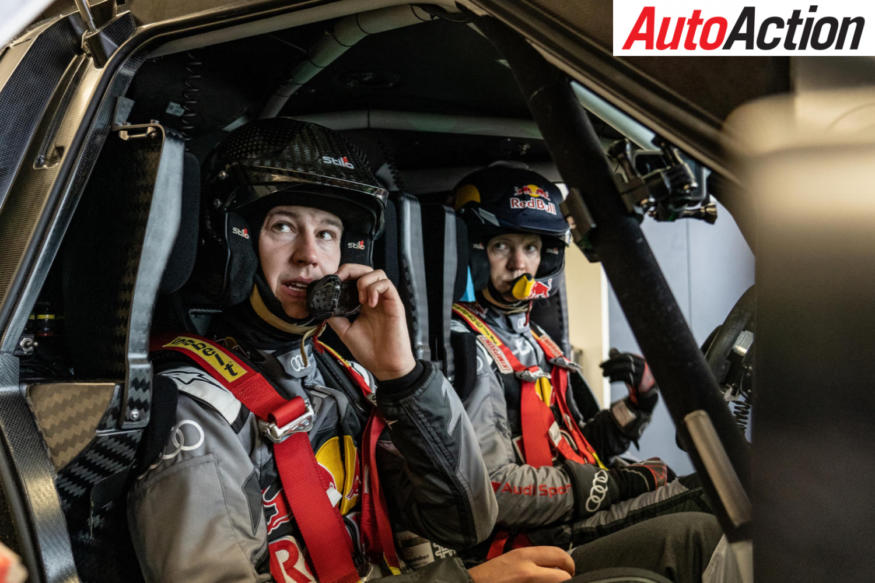
The three RS Q e-trons will be driven by Dakar veterans Stephane Peterhansel and Carlos Sainz, as well as race and rally star Mattias Ekstrom.
Testing is already well underway, both through the towing red-sand dunes and rocky desert tracks in Morocco and at dedicated test tracks in Europe.
“Today, electromobility at the four rings is no longer a dream of the future, but the present,” says Markus Duesmann, chairman of Audi.
“We want to continue demonstrating the brand’s slogan Vorsprung durch Tecknik in international top-level motorsport in the future and develop innovative technologies for our road cars.
“This is why we are taking the next step in electrified motorsport by facing the most extreme conditions. The many technical freedoms offered by the Dakar Rally provide a perfect test laboratory for us in this respect.”
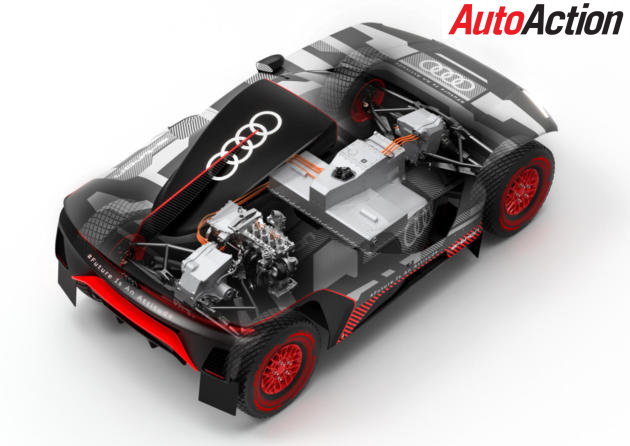
The RS Q e-tron uses an electric drivetrain with an efficient TFSI combustion engine plucked from its DTM racers, but working as part of an energy converter that charges the high-voltage battery during driving. The battery, which weighs around 370 kilos and has a capacity of 50 kiloWatt-hours, powers slightly-modified motor-generator units taken from Audi’s latest Formula E car on the front and rear axles.
A third motor-generator units is used as part of the energy converter and recharges the high-voltage battery while driving and also recovers braking energy.
The Dakar dueller has only one forward gear and the front and rear axles are not mechanically connected, as is also common in electric vehicles. Audi software handles torque distribution between the axles.
Measuring 4.5 metres long, 2.3 metres wide, and standing 1.95 metres high, the 2000-kilo RS Q e-tron has a maximum system power output of 500 kiloWatts and hits 100km/h in just 4.5 seconds on loose gravel, with a regulated top speed of 170km/h.

The all-new raid racers begin life with a basic tubular steel frame but there is massive protection for the crew and high-voltage battery package as Audi uses the best technology it can find for the first hybrid-electric desert racer to tackle the Dakar.
“The risks in off-road racing were at the centre of the considerations for a sophisticated safety concept. From the electric safety of the high-voltage system, to optimum passenger protection in the event of accidents, the design department mastered many challenges,” says Audi.
Although Dakar rules mandate a steel-frame chassis, Audi has gone to the aerospace industry to find a heat-resistant, alloy-quenched and tempered steel that contains chromium, molybendum and vanadium.
The story is similar through every element of the car, including protection of the crew from the high-voltage elements of the drivetrain.
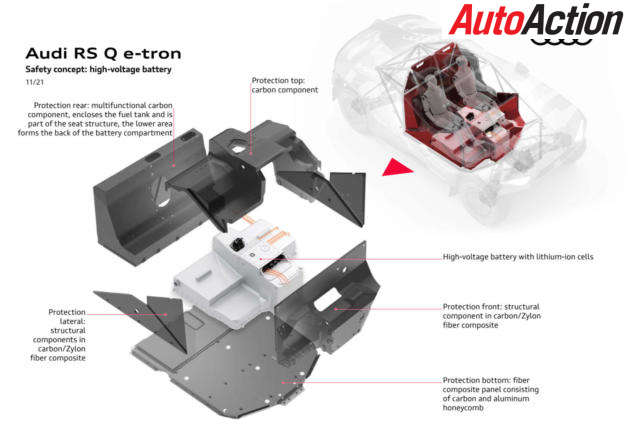
“The structural design of the frame incorporated methods and findings that we have honed over decades in many disciplines,” says Axel Löffler, the car’s chief designer.
These include the tubular frame designs from the DTM (2004 to 2011) as well as the sheet steel chassis in rallycross (2017 to 2018) and the CFRP monocoques in the LMP sports cars (1999 to 2016), in the DTM touring car (2012 to 2020) and single-seater racing in Formula E (2017 to 2021).
Depending on the components, the body is made of CFRP, Kevlar or composite construction, in some cases supplemented by an internal honeycomb structure.
To protect from scratches, a heated and laminated glass windshield from the Audi A4 road car is used, while the side windows are made of lighter polycarbonate.
The cockpit has comprehensive dust sealing and the crew ride in CFRP shells, similar in design to the DTM and LMP cars. All the seat shells are identical, but foam inlays and inflatable seat cushions are adapted to each driver and navigator.
The high-voltage system of the electric drive, with its energy converter, requires multiple protection. The centrally located high-voltage battery is protected by CFRP structures, some reinforced by Zylon.
The lower protection is very complex to protect against the effects of metre-high jumps, whirling stones and large ramp angles.

It starts with an aluminium plate to resist abrasion and partially absorb impact energy, topped by energy-absorbing foam which distributes loads to an upper sandwich structure above.
This third structure protects the high-voltage battery and the gasoline tank.
In total, the structure is 54 millimetres thick.
“With these designs, we see a direct transfer of our knowledge from the circuit to cross-country rallying,” says Löffler.
“Admittedly, the energies are higher off-road because of the long suspension travel, the duration of the load and the vehicle mass, but the g-forces measured are similar to those of Le Mans prototypes.”
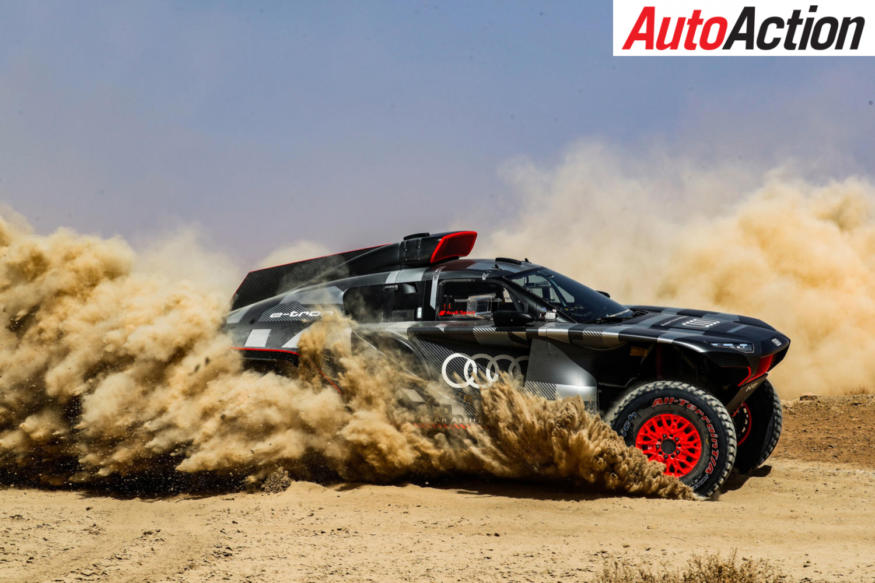
But, wait there’s more.
An ISO monitor in the car, also used in the Le Mans diesel hybrids and Formula E, detects dangerous fault currents. In the event of maximum kinetic loads, such as a collision, the system switches off automatically. In that case, lights on the body and an acoustic signal serve as danger warnings to the outside world.
Optimum insulation of the system against water during river crossings and an electrically insulating extinguishing agent in the on-board fire extinguisher are also used.





